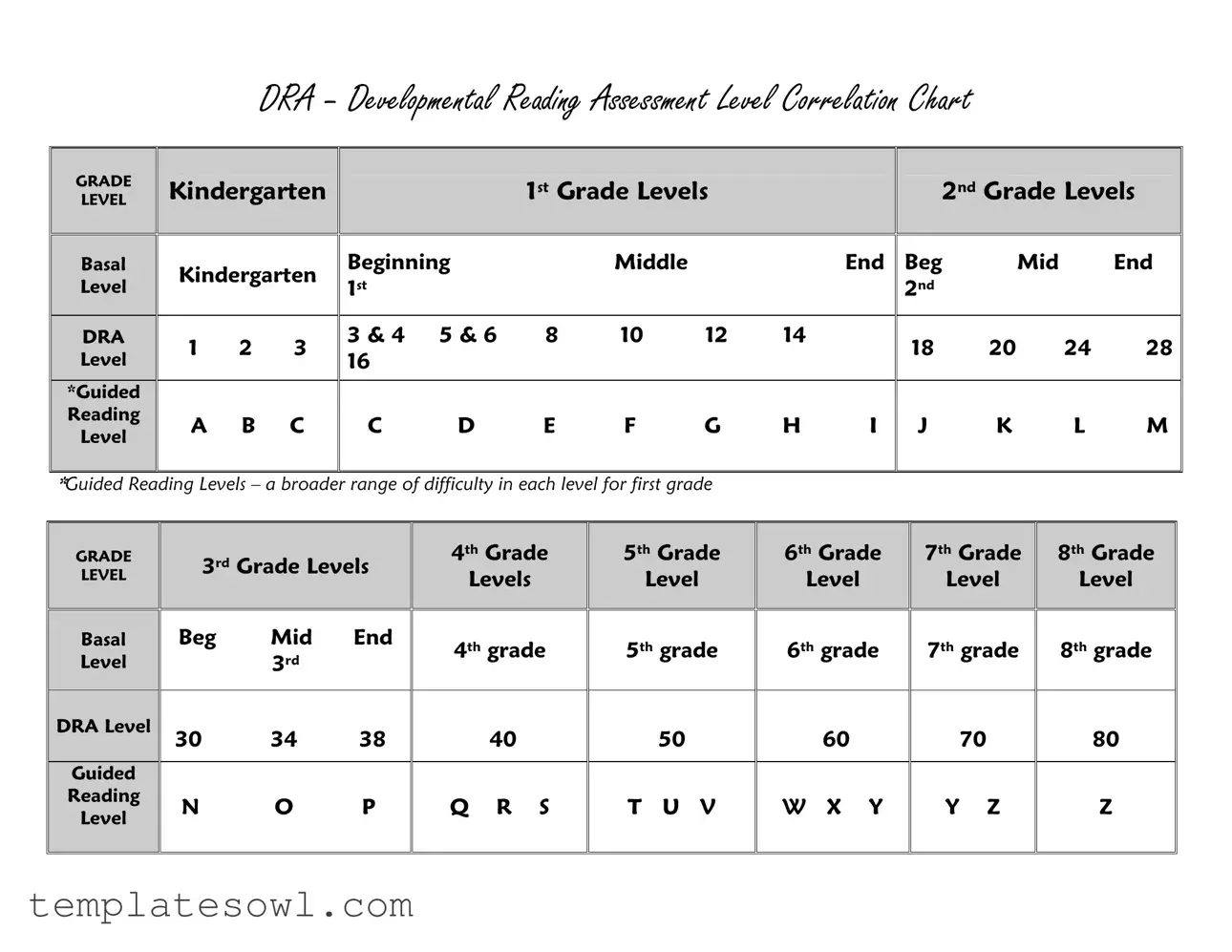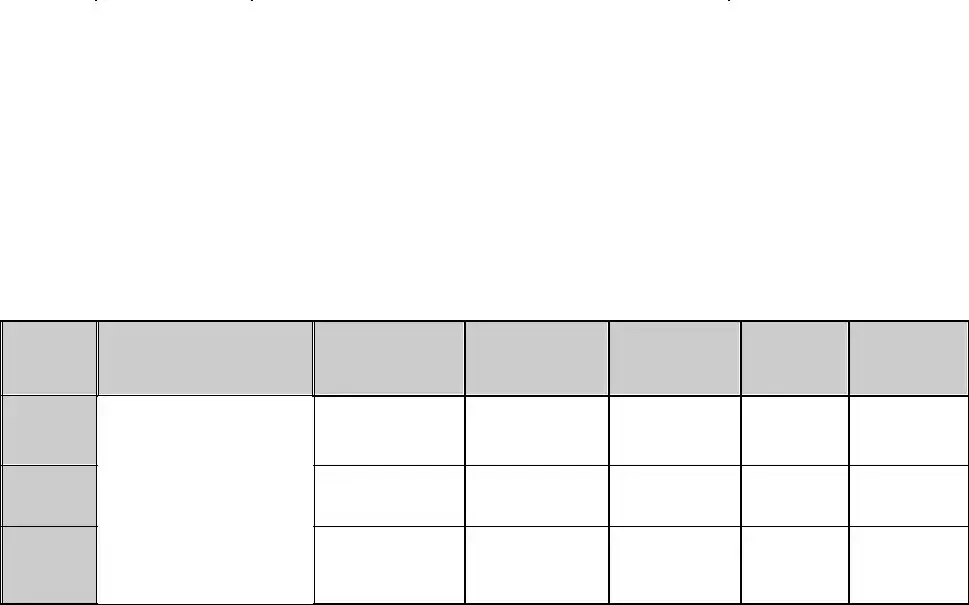What is the DRA Reading Levels Chart?
The DRA (Developmental Reading Assessment) Reading Levels Chart is a tool used to assess the reading abilities of students from Kindergarten through 8th grade. It correlates different reading levels, including DRA levels and guided reading levels, helping educators match students with appropriate reading materials that suit their skill levels.
How are DRA levels determined?
DRA levels are determined through a structured assessment process where students read various texts and answer comprehension questions. Their performance is graded to designate a specific DRA level. This method assesses their fluency, comprehension, and overall reading ability.
What is the significance of guided reading levels?
Guided reading levels provide a broader range of difficulty within each level, particularly for first-grade students. They allow educators to offer varied texts that are appropriate for each child's specific reading needs, facilitating a more individualized approach to learning.
How does the chart help in selecting reading materials?
The chart serves as a guide for teachers and parents when selecting reading materials. By cross-referencing a student's DRA level with the corresponding guided reading levels, they can identify books that are both enjoyable and challenging, enhancing the learning experience.
Are there different levels for each grade?
Yes, the DRA Reading Levels Chart specifies different levels for each grade, ensuring that students progress through increasingly challenging texts as they advance in their reading skills. Each grade has designated beginning, middle, and end levels, which assist in tracking a student’s growth over the school year.
Can the DRA levels be used for all students?
While DRA levels are designed to cater to a broad range of students, it is important to remember that not every student will fit neatly into these categories. Individual variances in learning and reading skills may require additional assessments or considerations beyond the chart.
How often should a student's reading level be assessed?
Students should ideally be assessed at regular intervals throughout the school year, such as at the beginning, middle, and end of the academic year. This practice allows educators to monitor progress and adjust instruction or reading material as necessary, promoting continuous development.
Where can I find more resources related to DRA levels?
Additional resources related to DRA levels can typically be found through educational websites, reading programs, and publications focused on literacy. Schools often provide information or workshops that can help teachers and parents understand how to effectively use the DRA Reading Levels Chart.

